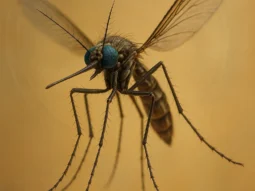
How Carpenter Ants Fail at Carpentry: The Unhelpful Side of Nature's Builders
Battling carpenter ants can be a real headache, especially when you're up against the largest pest ants in Georgia. These wood-loving insects can cause significant damage to your home if left unchecked. Whether you're facing the dull black variety with yellowish hairs on their abdomen or the ones with a reddish head and shiny black rear, identifying and tackling these pests is crucial.
What are Carpenter Ants?
Physical Characteristics
Carpenter ants are not your average household pests. They stand out due to their size, with adults ranging from ¼ to ½ inch in length. You may encounter two predominant species in Georgia, namely the black carpenter ant (Camponotus pennsylvanicus) and the Florida carpenter ant (Camponotus floridanus). The black variant possesses a dull black color with yellowish hairs dotting their abdomens, whereas the Florida species showcases a reddish-brown head and thorax with a shiny black abdomen.
Identifying these ants can be tricky since ants from a single nest can vary greatly in size. However, other distinguishing features can aid in identification. The Florida carpenter ant, for instance, has 12-segmented antennae and a circular ring of hair at the end of the abdomen. Their body is equipped with abundant, long, and golden hairs, and their majors range in size from 5.5 to 11 mm, and the winged females, or alates, stand out as the largest caste at up to 20 mm in length.
Behavior and Habitat
Carpenter ants are discerning in their choice of habitat, showing a clear preferential bias towards moist wood areas. They commonly infest spaces near windows, doors, and roofs—essentially, any place where wood is exposed to persistent moisture or leaks. These industrious insects forge their nests in various wooden structures, both indoors and out. Common outdoor nesting sites include rotting tree stumps, under bark, or even amidst palm leaf petioles.
Their food preferences throughout the active season convey their omnivorous nature. Carpenter ants will attack live arthropods, scavenge for proteins, and are also fond of sweet substances like honeydew from aphids. In residential areas, they often end up feeding on household foods, showing their adaptability and opportunistic feeding behavior.
In understanding the behavior and habitat of these ants, you’re better equipped to spot the signs of infestation, which ultimately is crucial for effective pest management.
Signs of Carpenter Ant Infestation
Detecting a carpenter ant infestation early is crucial to preventing serious structural damage to your home. Recognizing the evidence of their presence can save time and money. Pay attention to these tell-tale signs.
Damage to Wood Structures
Carpenter ants are notorious for their ability to cause damage to wood. Unlike termites, carpenter ants do not consume wood for nutrition; instead, they excavate it to create smooth, hollowed-out galleries for their nests. The affected wood may display slit-like openings, which the ants use to discard unwanted debris. These openings can be discovered in various areas where wood has become moist and vulnerable.
Identifying Damage:
- Look for slit-like openings in wood.
- Galleries typically run parallel to the wood grain.
- Springwood, the softer part of the wood, is excavated first.
- Summerwood connects the galleries, with tunnels.
- Gallery walls are smooth, with a sandpapered look.
Ongoing damage can seriously weaken the structure of your home over time. It's essential to regularly inspect wood structures, especially in areas prone to moisture and consider preventative measures to reduce ant access.
Sawdust and Frass
As carpenter ants burrow into the wood to expand their nesting area, they create piles of sawdust-like debris and frass (a combination of wood fragments and fecal matter). This byproduct is also known as frass and is often composed of wood particles that resemble pencil shavings, with a mix of insect parts and fecal material. Debris with a darker color often points to decaying wood, which can be a clue in locating a nest.
The unique composition of the frass can help differentiate carpenter ant activity from other wood pests:
| Frass Characteristics | Carpenter Ants | Other Pests |
|---|---|---|
| Appearance | Coarse, fiber-like | Seed-like pellets, mud-like |
| Components | Wood shavings, insect parts | Fecal pellets, mud-like fecal |
| Indicative of | Nest expansion | Termites or other infestations |
Audible Noises
An often disturbing but clear indicator of a carpenter ant infestation is the noise they make. If you're hearing crackling sounds in the walls, especially at night, it could be a sign that a large colony is actively working within your home. This noise results from the ants gnawing at the wood, and when numerous, can be audible to the human ear.
- Listen for noises during nighttime when ants are most active.
- Sound location reveals where the colony is at work within the structure.
- Seek the source of persistent noises as they may indicate an established nest.
Hearing these sounds warrants immediate attention and typically requires a professional assessment. Pest control experts can locate the nest and recommend suitable extermination methods.
As you remain vigilant for these indicators of carpenter ant activity, it’s also important to address underlying conditions that predispose your home to infestations. Taking proactive steps can help reduce the likelihood of these pests making their home in yours.
Prevention and Control
Eliminating Moisture Sources
Moisture is a carpenter ant's best friend. To fortify your home against these persistent invaders, you'll need to start with moisture control. Inspect your home for leaks regularly and repair any that you find immediately. This includes leaks in roofing, attics, and foundations that create a hospitable environment for carpenter ants. Ensure that your home's ventilation is up to snuff, particularly in attics, basements, and crawl spaces. Dehumidifiers can help in these areas too, especially if natural airflow is minimal.
Replace rotted or water-damaged wood as soon as possible—these are prime real estate for a carpenter ant nest. It's also wise to dry out any crawl spaces with a vapor barrier and to keep your gutters clean. Ensure drain spouts direct water away from your home, and consider installing rain gutters if your house lacks them. By keeping the wood in and around your house dry, you create a less enticing environment for carpenter ants to call home.
Sealing Entry Points
Carpenter ants are tiny but adept at finding ways into your home. To keep them out, seal all potential entry points. Cracks in your foundation, gaps around doors, windows, and where utilities enter your house should all be sealed with a silicone-based caulk. Take the time to inspect and seal any crevices in the structure where ants could gain access. Prune any overhanging tree branches that can act as an aerial highway for ants into your house. By sealing your home meticulously, you make it much tougher for carpenter ants to invade.
Removing Attraction Factors
Carpenter ants are drawn to wood, so limit their access to it near your home. Store firewood off the ground and several feet away from your house's exterior. Remove dead stumps and trim broken tree limbs, as these can serve as a breeding ground for colonies. Using non-organic mulches can also reduce the appeal of your landscaping to carpenter ants. Keep plant branches trimmed back from your home's exterior; this reduces shelter and bridging opportunities for ants moving from foliage to your home's structure. By removing factors that attract carpenter ants, you reduce the chances of them settling in and around your property.
DIY vs. Professional Pest Control
Pros of DIY Methods
When it comes to battling carpenter ant infestations, taking the do-it-yourself approach has its advantages. Cost-effectiveness stands out as a key benefit; you'll often spend less on DIY methods compared to hiring professional services. Moreover, using natural remedies like diatomaceous earth offers an organic solution that doesn't harm pets or children. DIY can also provide immediate relief, allowing you to address visible ants quickly. You'll have the flexibility to apply treatments at your own pace and schedule which is another significant plus.
- Cost savings
- Natural, organic options available
- Immediate action
- Flexible scheduling
Cons of DIY Methods
Despite the initial appeal, DIY pest control has downsides. Identifying and effectively treating all nest sites can be complex; parent and satellite colonies may be overlooked. DIY methods often lack the residual effectiveness of professional-grade treatments. Physical risks are present when dealing with toxic substances like boric acid and measures must be taken to avoid inhalation or improper application. What's more, only a small percentage of ants forage at a time. This means that visible results may be misleading, and without professional tools and knowledge, full eradication is unlikely.
- Complexity of fully eradicating colonies
- Potential safety risks with chemicals
- Limited residual effectiveness
- Potential for misleading results
Benefits of Hiring a Professional
Turning to a licensed pest control professional to handle carpenter ants introduces a suite of advantages. Experts can locate nests more accurately and apply appropriate treatments strategically. They often use methods that have lasting effects and can reduce the likelihood of future infestations. A professional approach adjusts based on the specific nature of your infestation, which can lead to more thorough results. Pest control experts are also trained in safe application practices, ensuring that treatments pose no harm to your family or the environment.
- Strategic, accurate nest location and treatment
- Long-term prevention against reinfestation
- Tailored solutions for specific infestation scenarios
- Safe application of treatments
Conclusion
Understanding carpenter ants is key to effectively managing an infestation in your Georgia home. Armed with insights into their habits and habitats you're now better equipped to weigh the DIY approach against professional pest control services. Remember while you might save money and enjoy the immediacy of tackling the problem yourself there's no substitute for the expertise and thoroughness a professional brings. Whatever route you choose act swiftly to prevent further damage and safeguard your home from these industrious invaders.
We hope you enjoy these informational articles. If you'd like to learn more about our eco-friendly pest control services, call (844) 955-2447.
Read More
Your Path to a Pest-Free Home or Business
Romex Pest Control
We are committed to protecting you, your children, and your pets with our eco-friendly, child-friendly, and pet-friendly guaranteed pest control solutions.
Romex Pest Control is fully insured and licensed in Texas, Oklahoma, Louisiana, and Mississippi.
Service Areas:
Hours
M-F 8 am–5 pm
Sat 8 am–2 pm
Sun Closed
Established 2016 © Copyright 2025 Romex Pest Control










